Q
Is the 2019 Forester good in snow?
The 2019 Subaru Forester really shines when the snow starts falling, and that's largely thanks to its standard Symmetrical All-Wheel Drive system. It automatically shuffles torque to the wheels with the most grip, and when you kick on X-Mode, it optimizes low-speed traction even further—perfect for icy roads or light off-roading. The 215mm ground clearance helps too, giving it a bit more clout over rough stuff. Plus, it's got features that play nice with snow, like compatibility with snow tires and winter-friendly touches such as heated seats. Now, here in Malaysia, with our tropical climate, snow driving isn't exactly on most owners' radars. But if you're planning a road trip to a wintery country, the Forester's 4WD is definitely something you can count on. And let's not forget, that full-time AWD also boosts stability on wet roads, which comes in handy during our monsoon season. Just keep in mind, regular maintenance is key—make sure to check the differential fluid regularly. If you often hit bumpy or rough roads, you might want to shorten those service intervals to keep that 4WD system in top shape for the long haul.
Special Disclaimer: This content is published by users and does not represent the views or position of PCauto.
Related Q&A
Q
What is the difference between 2018 and 2019 Forester?
The main difference between the 2018 and 2019 Subaru Foresters lies in the fact that the 2019 model received a full fifth-generation redesign. The exterior got a more modern look, with slightly increased overall dimensions and a 30mm longer wheelbase that improves rear passenger space. The 2019 Forester switched to the new Subaru Global Platform (SGP), which significantly boosted body rigidity and optimized the suspension system, leading to noticeable improvements in driving stability and cabin noise insulation.
Under the hood, the 2019 model in the Malaysian market primarily features a 2.0-liter direct-injection naturally aspirated engine paired with a Lineartronic CVT transmission. While horsepower remains similar to the 2018 version, fuel efficiency sees an uptick. Inside, the 2019 Forester gets an all-new interior design, with a larger standard infotainment screen and, for the first time, the inclusion of Subaru's EyeSight driver assistance system (on select trim levels), which bundles adaptive cruise control and pre-collision braking.
Notably, the 2019 model dropped the previous turbocharged variant but enhanced the functionality of the X-Mode off-road system. For Malaysian consumers, the 2019 Forester better meets the latest ASEAN NCAP safety standards. It also retains a 220mm ground clearance, making it well-suited to local road conditions. If considering a used car purchase, the 2019 model's updated platform offers potential long-term durability benefits. Meanwhile, some 2018 models might present more attractive pricing due to the lack of the EyeSight system.
Q
How big is the gas tank on a 2019 Forester?
The 2019 Subaru Forester has a fuel tank capacity of 16.6 gallons (approximately 63 liters), a design that delivers an extended driving range, perfect for both long highway trips and daily city commutes in Malaysia. As a compact SUV, the Forester's tank size strikes a nice balance between fuel efficiency and practicality. Paired with its 2.5-liter boxer engine and Symmetrical AWD system, it handles a variety of road conditions – from Malaysia's frequent rainy season wet roads to rough suburban terrains. For owners who love road trips or often drive between states, that larger tank means fewer stops at the pump and more convenience. Keep in mind, though, actual range can vary based on driving habits, road conditions, and vehicle load. Regular maintenance is a good idea to keep fuel efficiency in check. Also, the Forester's fuel tank is made of resin, which is lightweight and corrosion-resistant – a common feature in Subaru models.
Q
What kind of engine is in the 2019 Subaru Forester?
The 2019 Subaru Forester in the Malaysian market comes with a 2.0-liter horizontally opposed four-cylinder naturally aspirated engine (FB20 type), delivering 156 horsepower and 196 Nm of peak torque. It's paired with a Lineartronic continuously variable transmission (CVT) and the Symmetrical All-Wheel Drive system. This engine features direct injection technology, optimizing fuel efficiency and low-end torque performance—perfect for Malaysia's mix of urban and suburban roads. The boxer engine's low center of gravity enhances cornering stability, while the full-time AWD system handles slippery wet roads during the monsoon season. Notably, Subaru's engine layout stands out from most brands; its horizontally opposed configuration effectively reduces vibration, though owners should keep up with regular maintenance to ensure long-term reliability. If you're craving more power, check out the brand's turbocharged models, but the naturally aspirated version is easier on maintenance costs and fuel compatibility—better suited for Malaysia's daily driving conditions.
Q
What is the oil temperature in Forester 2019?
The oil temperature of the 2019 Subaru Forester typically stays between 90°C and 110°C under normal driving conditions. It might briefly rise to around 120°C during spirited driving or in high-temperature environments, but the boxer engine and efficient cooling system do a solid job of keeping it in check. For Malaysian owners, the tropical climate could push the oil temperature a bit higher. I'd recommend regularly checking the oil condition and using fully synthetic oil that meets the factory specs to ensure optimal lubrication and heat dissipation. Oil temperature is a key indicator of engine health—too high can cause lubrication failure, while too low hurts fuel economy. The Forester's oil temperature gauge or warning light helps keep an eye on any issues. During routine maintenance, besides oil temperature, keep an eye on coolant levels and radiator cleanliness since these also affect oil temperature indirectly. If you notice the oil temperature spiking abnormally often, head to an authorized service center for a professional check to avoid potential long-term engine damage from prolonged high temperatures.
Q
How many litres are in a 2019 Subaru Forester?
The 2019 Subaru Forester has a 55-liter fuel tank, which is above average for its SUV class. That's a solid size for both long highway drives and city commutes here in Malaysia. True to Subaru's focus on practicality and safety, the tank design also ties into the Forester's fuel efficiency. Pairing the 2.0-liter boxer engine with the Lineartronic CVT delivers a smooth ride and pretty decent gas mileage. For Malaysian drivers, 55 liters means fewer stops at the pump since you can cover more ground on a full tank. Plus, Subaru's Symmetrical All-Wheel Drive system is a real plus during Malaysia's rainy seasons, giving better grip and stability on wet roads. And hey, keeping up with regular maintenance and driving smart can definitely help stretch that fuel even further. It's always a good idea to stick to the official service schedule to keep your Forester running at its best.
Q
How to check oil level 2019 Subaru Forester?
To check the oil level in a 2019 Subaru Forester, first make sure the vehicle is parked on level ground and the engine is turned off. Wait 5-10 minutes to let the oil drain back into the oil pan, then pop the hood and locate the dipstick—it’s usually got a yellow or orange pull tab. Pull it out, wipe it clean with a rag, stick it back in all the way, then pull it out again. Check where the oil mark lands—it should be between the "MIN" and "MAX" lines. If it’s below "MIN", top it off with the oil specified in the owner’s manual. If it’s at or above "MAX", you’ll need to drain some out to prevent engine damage. With Malaysia’s hot climate, it’s a good idea to check the oil condition regularly too. If it looks black or has metal particles, you might need an early oil change. Also, the Forester’s boxer engine tends to burn a bit more oil than inline engines, so owners should get in the habit of checking it monthly to keep the engine well-lubricated and extend its life.
Q
How much oil does a 2019 Subaru Forester take?
The 2019 Subaru Forester has an oil capacity of approximately 5.4 liters, including the oil filter. If you're just changing the oil without replacing the filter, you'll need around 5.0 liters. The exact amount might vary slightly depending on the engine model or region, so it's best to check your vehicle's owner's manual or consult an authorized Subaru Malaysia dealer for precise info. In Malaysia's hot and humid climate, picking the right oil viscosity is super important. The Forester typically recommends 0W-20 or 5W-30 full synthetic oil – these types hold up well under high temperatures, maintaining good lubrication while also helping boost fuel efficiency. Regular oil and filter changes are key to keeping your engine healthy; it's generally advised to do this every 10,000 kilometers or 6 months, whichever comes first. Plus, Subaru's Boxer engine has that unique horizontally opposed design, which means it's a bit pickier about oil. So make sure you use oil that meets Subaru's certification standards to keep the engine running smoothly for the long haul. If you're not sure how to choose the right oil or handle the maintenance, head over to Subaru Malaysia's official service centers. Their professional technicians will hook you up with solid advice and service.
Q
How big is the fuel tank on a 2019 Subaru Forester?
The 2019 Subaru Forester has a 55-liter fuel tank capacity. This design balances daily commuting and long-distance travel needs while delivering solid range performance. For Malaysian users, a 55-liter tank is above average for the SUV class, handling most driving scenarios—like the KL to Penang highway run without constant refueling stops. As a practical, safety-focused SUV, the Forester's tank design also factors in fuel economy. Paired with its 2.0-liter boxer engine and CVT transmission, it delivers well-rounded fuel efficiency. Malaysia's varied road conditions, from city traffic jams to rural mountain roads, are no match for the Forester's tank size and fuel efficiency, ensuring consistent driving experiences. If you frequently take long trips, make sure to regularly check the fuel tank and system for optimal performance and safety. Also, keep an eye on Subaru's recommended fuel additives to keep the engine clean and running efficiently.
Q
Is 2019 Forester direct injection?
The 2019 Subaru Forester does come with Direct Injection technology. It's powered by Subaru's FB20 2.0-liter horizontally opposed four-cylinder engine, which combines direct fuel injection with Subaru's unique DOHC (Double Overhead Camshaft) design. This setup boosts fuel efficiency and power output while cutting emissions, making it perfect for both city driving and long trips around Malaysia. The perks of direct injection lie in finer fuel atomization and more precise control over fuel delivery, which ramps up combustion efficiency. But here's the thing—over time, carbon buildup might form on the intake valves, so regular engine maintenance is a good idea to keep it running at its best. Subaru's Symmetrical All-Wheel Drive system is another big win for the Forester. Paired with X-Mode off-road mode, it handles Malaysia's diverse road conditions with ease, whether it's slippery wet roads during the monsoon or rough terrain in the countryside. On top of that, the Forester is equipped with the EyeSight driver assist system, offering features like pre-collision braking and adaptive cruise control to up the safety ante even more. For Malaysian buyers, the 2019 Forester strikes a solid balance between technology, performance, and practicality, making it a SUV well worth considering.
Q
What is the maintenance schedule for a 2019 Forester?
The 2019 Subaru Forester's maintenance schedule recommends regular servicing every 6 months or 10,000 kilometers, whichever comes first. This primarily involves an oil and oil filter change, along with inspections of the brake system, tires, suspension, and undercarriage. You'll also need to replace the air filter every 30,000 kilometers and the spark plugs every 60,000 kilometers. For the transmission fluid and differential oil, it's advisable to check or replace them every 40,000 kilometers to maintain optimal four-wheel-drive performance.
Given Malaysia's climate, pay extra attention to cleaning the cabin air filter – replace it every 15,000 kilometers. The hot and humid conditions can easily lead to mold growth, which affects in-car air quality. Additionally, if you mostly do short city drives, consider shortening the oil change interval to 5,000 kilometers since frequent stop-starts accelerate oil degradation.
The Forester's EyeSight driver assistance system also requires regular calibration, especially after replacing the windshield or being involved in a collision. It's best to have this done at an authorized service center. Note that maintenance intervals may need adjustment based on actual driving conditions. For example, if you frequently drive on gravel roads or coastal areas, you should inspect the brakes and check for undercarriage rust earlier than scheduled.
Latest Q&A
Q
What is the difference between the 2024 and 2025 BMW 5 Series?
There are some differences between the 2024 and 2025 BMW 5 Series models. In terms of pricing, the 2024 520i starts at RM 332,800, with the 520i M Sport variant coming in at RM 349,800. The 2025 530i M Sport, on the other hand, is priced at RM 399,800.
Under the hood, the 2024 520i engines deliver either 210PS or 208PS, while the 2025 530i M Sport ups the ante with a 258PS powerplant. Performance-wise, the 2024 models top out at 230km/h and sprint from 0-100km/h in 7.5 seconds. The 2025 model pushes that top speed to 250km/h and shaves the 0-100km/h time down to just 6.2 seconds.
Looking at the specs, some 2024 trims have rear seats with manual adjustments or fixed configurations, whereas the 2025 model gets a 40:20:40 split-folding rear seat setup. Audio systems also see an upgrade: most 2024 models feature Harman Kardon speakers, while the 2025 model steps up to a Bowers & Wilkins surround sound system.
Additionally, the 2025 5 Series hit dealerships on March 13, 2025, and comes with a 2-year unlimited mileage warranty. The 2024 models first arrived on September 2, 2024.
Q
How much is insurance for a 2024 BMW 5 Series?
The insurance cost for the 2024 BMW 5 Series in Malaysia varies based on several factors, typically ranging from RM5,000 to RM15,000 annually. The exact amount depends on the vehicle model (such as 520i, 530e, or M550i), engine displacement, the owner's age, driving record, type of policy (comprehensive or third-party), and the insurance company's discount policies. For instance, the high-performance M550i, with its higher repair costs, will have significantly higher premiums than the entry-level 520i, while the hybrid 530e may qualify for partial insurance discounts due to its eco-friendly features. Additionally, Malaysia's insurance market is influenced by the No Claim Discount (NCD), where drivers with consecutive claim-free years can enjoy a maximum 55% reduction in premiums. It's advisable to obtain accurate quotes through insurance company websites or comparison platforms before purchasing a car, and also to understand the additional services offered by Malaysian car insurance, such as roadside assistance or windscreen coverage, as these details can impact the final decision. Notably, luxury car insurance usually includes higher third-party liability coverage limits to comply with local regulatory requirements, and owners can also adjust the excess amount according to their needs to balance premium costs.
Q
What is the maintenance cost of a 2024 5 Series?
The maintenance costs for the 2024 BMW 5 Series in Malaysia can vary depending on the specific model and driving habits, but generally speaking, the regular servicing fees for the first 3 years of a new car are roughly between RM3,000 to RM5,000 per year. This depends on the chosen original maintenance package and the actual mileage driven. BMW offers various maintenance plan in Malaysia, allowing owners to opt for one-time payment or installment plans. These packages typically cover basic items like oil changes, filter replacements, and brake inspections. If the vehicle is equipped with more high-tech features, such as active suspension or a hybrid system, the long-term maintenance costs might be slightly higher. However, BMW's after-sales service network in Malaysia is quite comprehensive, with many authorized service centers capable of providing professional maintenance and repair services. To reduce long-term ownership costs, it's advisable for owners to follow the manufacturer's recommended regular maintenance schedule and use genuine parts. This not only extends the vehicle's lifespan but also helps maintain a good resale value. Additionally, given Malaysia's hot and humid climate, owners should pay extra attention to maintaining the air conditioning system and battery to ensure the vehicle always stays in optimal condition.
Q
How much is a used BMW 5 Series 2024?
In the current Malaysian market, used 2024 BMW 5 Series models aren't widely available yet due to the new car's relatively recent launch. However, based on the market trends for used BMW 5 Series of similar model years and conditions, prices typically range from RM250,000 to RM350,000. The exact price depends on factors like trim level, mileage, maintenance history, and whether the original factory warranty is still valid. For instance, higher-spec models like the 530i M Sport might be closer to the upper end of that range, while entry-level variants such as the 520i would be relatively lower. When buying a used car, it's advisable to go through officially certified pre-owned channels or reputable dealerships to ensure the vehicle has undergone rigorous inspection and comes with warranty coverage. Additionally, the BMW 5 Series is renowned for its luxurious interior, advanced technology, and driving dynamics – the 2024 model, in particular, likely features the updated iDrive system and mild-hybrid technology, which also influence used prices. In Malaysia, used car prices can also be affected by import duties, road tax, and insurance costs, so it's recommended to thoroughly assess the total cost of ownership and compare different car sources to get the best value for money before making a purchase.
Q
How many BMW 5 Series sold in 2024?
As of 2024, official sales figures for the BMW 5 Series in Malaysia haven't been formally released yet. But looking at BMW Malaysia's past market performance and industry trends, this luxury sedan has always maintained steady demand locally, especially thanks to its blend of sporty performance and business luxury that really resonates with local buyers. For 2024, the BMW 5 Series has rolled out more eco-friendly powertrain options, like plug-in hybrid models, which should further appeal to buyers who want both efficiency and high performance. In the Malaysian market, luxury car sales are usually influenced by the economic environment, consumption tax policies, and brand promotional activities. Interested consumers are advised to follow BMW Malaysia's official website or authorized dealers for the latest and most accurate information. Additionally, as a representative of mid-size luxury sedans, the BMW 5 Series competes with models like the Mercedes-Benz E-Class and Audi A6, which also have a strong presence in the Malaysian market. Consumers can make a comprehensive comparison based on personal preferences and budget.
View MoreRelated News

Subaru Registers New EV Trademark, Signaling Strategic Shift
Kevin WongAug 8, 2025
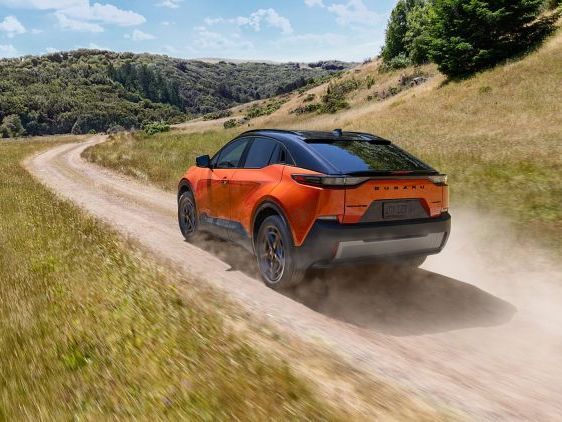
Uncharted is Subaru's first front-wheel-drive car, with a range of up to 482 kilometers.
MichaelJul 18, 2025
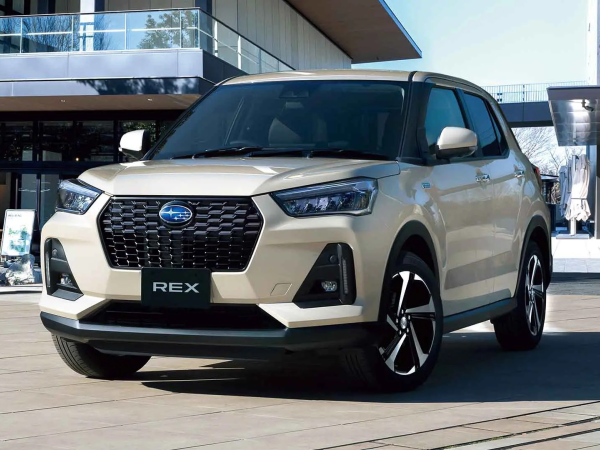
SUBARU REX Hybrid vs Nissan e-POWER: Spot the Difference!
WilliamJun 24, 2025
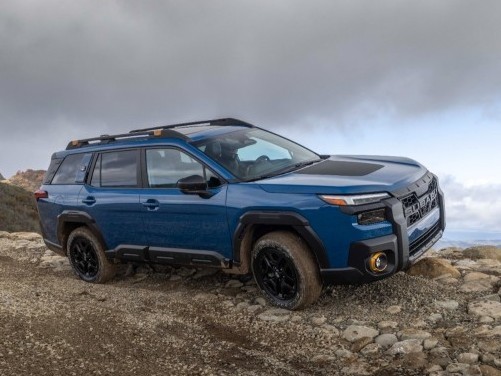
All-New Subaru Outback Debuts with SUV-Inspired Styling
JohnApr 22, 2025
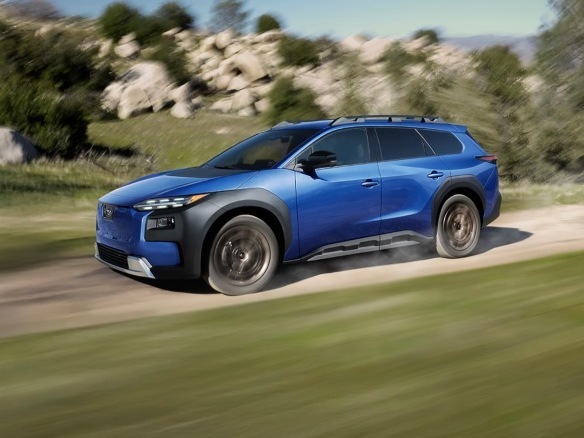
Subaru's Fastest Mass-Production Vehicle Debuted in New York: 375 HP!
MichaelApr 17, 2025
View More












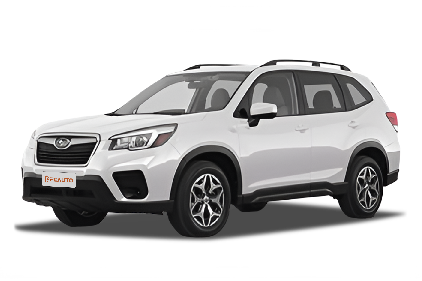





Pros
Cons